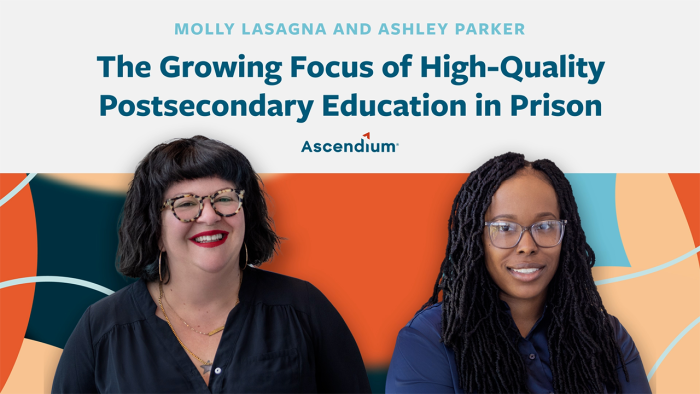
Three Takeaways from RAND Corporation’s Report: Assessing the Impact of COVID-19 on Prison Education
 For many in the U.S., the COVID-19 health crisis has been a disruptive, potentially life-changing event. For the 1.2 million incarcerated adults in federal and state prisons — and, particularly, for those pursuing an education while incarcerated — it has been catastrophic. The crowded nature of prisons made them especially susceptible to viral spread and caused state and federal correctional systems to implement a variety of policies to prevent or contain the spread of COVID-19 within their facilities. As a result, many correctional systems ceased or substantially cut back on postsecondary education programming, in many cases preventing instructors and other staff from entering their facilities.
For many in the U.S., the COVID-19 health crisis has been a disruptive, potentially life-changing event. For the 1.2 million incarcerated adults in federal and state prisons — and, particularly, for those pursuing an education while incarcerated — it has been catastrophic. The crowded nature of prisons made them especially susceptible to viral spread and caused state and federal correctional systems to implement a variety of policies to prevent or contain the spread of COVID-19 within their facilities. As a result, many correctional systems ceased or substantially cut back on postsecondary education programming, in many cases preventing instructors and other staff from entering their facilities.
To understand the extent of this disruption, in late 2020 Ascendium made a grant to RAND Corporation to undertake a comprehensive assessment of the impact that the COVID-19 health crisis had, and continues to have, on postsecondary education in prison programs. The resulting report, Assessing the Impact on COVID-19 on Prison Education, examines trends in the overall COVID-19 infection rate for the prison population in the U.S. It also presents the results of a 2022 survey of state correctional education directors. These results show what modifications were made to educational programs for incarcerated learners in response to the COVID-19 health crisis, as well as the impacts on instructional delivery and quality, student access to programs, budgets, enrollment and certifications earned.
Here are three key takeaways.
- The COVID-19 health crisis and responses to it negatively affected instructional quality. Ninety percent of state correctional education director survey respondents reported short- or long-term gaps in instruction and an inability to administer assessments (e.g., high school equivalency tests, industry-recognized certification exams, academic placement tests). This was particularly true for vocational education programs that, by design, require hands-on learning.
- The impact of mitigation measures taken by correctional authorities was dramatic. While these measures — which included providing face masks to incarcerated individuals and staff in correctional facilities, implementing isolation or quarantine of symptomatic persons who were incarcerated and enforcing sick or administrative leave for symptomatic staff — almost certainly helped save lives, they also caused most states to halt or suspend instruction.
- The COVID-19 health crisis and responses to it helped accelerate the adoption of online and hybrid learning models and the use of technology for postsecondary education in prison programs. However, this adoption was not as widespread as researchers hoped. According to survey results, 17 states reported that their departments of correction (DOC) provided access to online educational materials in 2020 to help mitigate the impact of the COVID-19 health crisis on education and training programs. Of those, 15 indicated that their DOC already allowed incarcerated learners access to educational material online prior to the health crisis.
As part of our efforts to expand postsecondary education in prison, Ascendium supports projects that aim to develop a better understanding of incarcerated learners through data and research. We hope the critical information collected as part of this initiative can help inform educators, colleges, corrections officials and policymakers about the overall impact of the health crisis and its effects on access to education programs, along with options to mitigate the short- and long-term adverse consequences.


